Plastic-films – Cellulosic-ethanol 10-11-2022 - Arhive
Plastic-films – Cellulosic-ethanol
Crude Oil Prices Trend
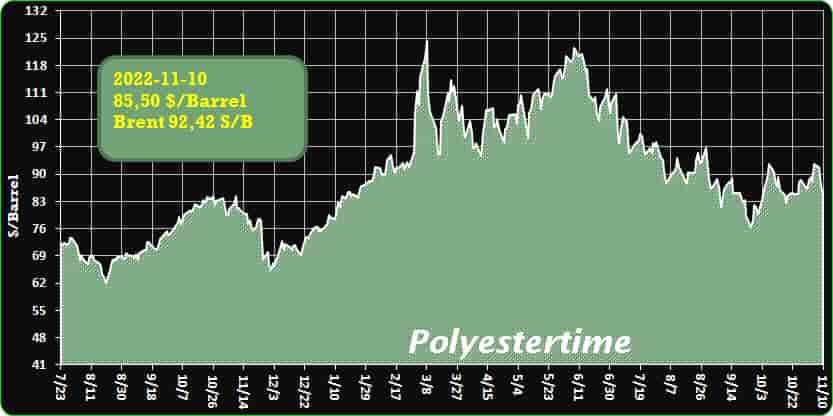
Crude Oil Prices Trend Polyestertime
-Israeli scientists make breakthrough on producing ‘green’ hydrogen fuel
Their splitting process is assisted by solar energy and lowers the amount of the invested electrical energy needed to break the chemical bonds in the water molecule to generate hydrogen and oxygen.
One can split an atomic nucleus to produce energy, but can you also split water to create environment-friendly hydrogen fuel? Doing so currently has two drawbacks: It is both time and energy intensive.
But now, researchers at Ben-Gurion University of the Negev in Beersheba and the Technion-Israel Institute of Technology in Haifa have taken a different path. BGU environmental physicist Prof. Arik Yochelis and Technion materials science professor Avner Rothschild believe they have identified new pathways that would speed up the catalytic process they think will reduce the invested electrical energy costs significantly.
Their splitting process is assisted by solar energy, which is known scientifically by the term photoelectrochemistry, and lowers the amount of the invested electrical energy needed to break the chemical bonds in the water molecule to generate hydrogen and oxygen. Oxygen evolution – the process of generating molecular oxygen (O2) by a chemical reaction, usually from water – requires the transfer of four electrons to create one oxygen molecule and then the adding of two hydrogen molecules to make water.
Oxygen evolution from water is carried out via oxygenic photosynthesis, which involves electrolysis of water and thermal decomposition of various oxides. This biological process supports aerobic life. When relatively pure oxygen is required industrially, it is isolated by distillation of liquefied air.
According to the current model, those electrons move one after the other in a sequence of four steps on an atomic reaction site that make the chemical reaction energetically difficult. Plastic-films – Cellulosic-ethanol
A paradigm shift in green hydrogen fuel
However, Yochelis and Rothschild showed – both theoretically and experimentally – a new paradigm where two electrons can simultaneously be transferred at different reaction sites, reducing the energy barriers for oxygen evolution. They were originally deterred by experiments that did not fit the existing paradigm, so they set out to find a different technique.
Their findings were published in the top peer-reviewed journal in the field of sustainability, Energy & Environmental Science, under the title “Parallel water photo-oxidation reaction pathways in hematite photoanodes: implications for solar fuel production.” The study was supported by the Science and Technology Ministry and largely conducted by doctoral student Anton Tsyganok (Technion) and postdoctoral fellow Dr. Paulino Monroy-Castillero (BGU).
“Our research changes the common understanding within the scientific community about the catalytic mechanism for oxygen evolution – a central and important reaction that represents a bottleneck in producing hydrogen from water,” said Rothschild, who is a faculty member of the Technion’s materials science and engineering department.
“By combining knowledge and experience from two different fields, we showed that the catalytic reaction is more complicated than people think,” he said. “We hope this new understanding will lead to additional breakthroughs in materials development and new processes to create clean fuels from renewable resources in order to facilitate the transition to net-zero.”
Yochelis, a faculty member of BGU’s Jacob Blaustein Institutes for Desert Research in Sde Boker, said: “Over and above the scientific contribution of the research, it is important to emphasize the importance of the multidisciplinary approach and collaborations when dealing with complex systems like the energy system. Plastic-films – Cellulosic-ethanol
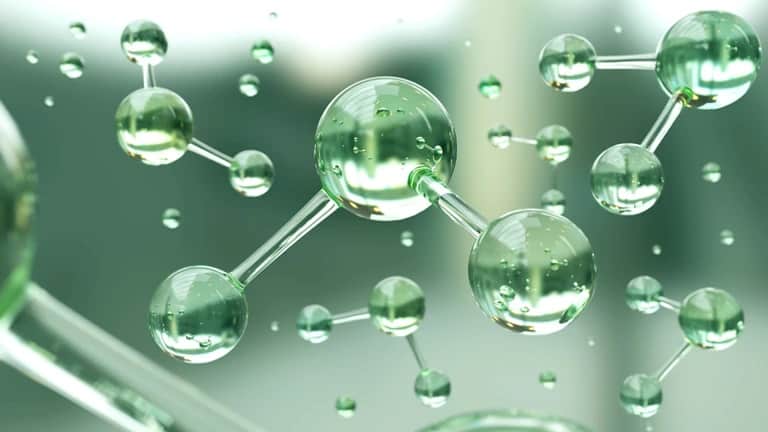
-Mann + Hummel divests plastics business
Mann + Hummel has underlined its future focus on its filtration business as its main driver with the sale of its global high-performance plastic parts business to Mutares SE & Co.
The plastics business, which comprises products other than filtration and separation solutions, was transferred to Mutares on October 1, 2022. The carved-out business will operate under the new name MoldTecs.
As part of the transaction, Mann+Hummel’s production facilities in Bad Harzburg, Sonneberg (both Germany) and Laval (France) with approximately 1,500 employees have been transferred.
“The transaction is an important milestone for Mann+Hummel and marks a further step in the technology-driven company’s transformation in line with its vision of leadership in filtration,” the company said. “With an absolute focus on filtration and separation solutions in the areas of Transportation and Life Sciences & Environment, Mann+Hummel will be able to speed up and further solidify its transformation strategy.
“Sharpening the strategic profile will allow the family-owned company to increasingly steer investments and research in sustainability and alternative drive concepts to deepen its commitment to cleaner mobility, cleaner air, and cleaner water. Mann+Hummel will continue to offer innovative filtration solutions to automotive customers, including International Aftermarket offerings and services.”

-Saperatec combining technologies to separate laminates
Multilayered flexible plastic packaging has long been the bane of recyclers. Functional layers that are laminated together to create high-performance packaging solutions serve their purpose well during the lifetime of the product. The end of life is a different story: because separating these layers has, up until now, been a serious challenge, these highly-engineered laminates have, for the most part, simply been considered as being unrecyclable.
That’s all about to change, if Saperatec GmbH has anything to do with it. After years of working to develop an approach that separates plastics and other materials from one another, the Germany-based company has created technology that uses a combination of chemistry and mechanics, making it possible to delaminate thin-layer composite materials and enabling these to be recycled. Plastic-films – Cellulosic-ethanol
“Our world relies on advanced materials,” CEO Thorsten Hornung said, speaking during an interview at K.
“Many of these important aspects of life rely on composite materials. And composite materials are, on the other side, hard to recycle. Because you have combination of plastics, paper, metals, glass and so on.”
The company’s approach is based on a water-based fluid, developed after 10 years of research. No enzymes, no solvents.
“In 2016 or thereabouts, the management decided to focus on laminated flexible packaging and the fluid that was tested and invented and improved over the past years was then dedicated to these applications,” said Lars-Oliver Stock, COO at Saperatec.
“It’s based on mechanical recycling, but we have a delamination step in between. Our focus right now is flexible packaging with an aluminium barrier layer, used generally for applications such as coffee pouches and dog foods.”
He added that the feedstock mainly comes from the PolyAl waste from beverage cartons. “Nowadays the PolyAl goes into incineration most of the time or into concrete applications. Another source is postindustrial film foil misprints, roll ends. There’s a lot of waste during production which is very clean pure material.”
He continued, adding that the idea for the technology came from the university, which led to the founding of the company. We started at lab scale and worked steadily further, first moving to a 3-litre scale where we could process maybe 100 grams at a single time, and ultimately reaching pilot plant scale, where we have a cubic meter vessel to which we can add maybe 50 to 100 kilos of material,” explained Stock.
How does it work?
The process is a hot wash one, said Hornung. Perhaps the best way to visualise this is to compare it to doing the laundry. Except the washing machine is actually a giant vessel – think something like a fermentation tank found at a craft brewery – that heats and stirs laminated packaging that’s been shredded to just a few centimetres in size.
“Then we add our specially formulated separation liquid,” he said.
Chemistry allows the liquid to get in between layers and the heat and agitation helps complete the process, resulting in plastics separating from other constituents.
Saperatec uses different chemical mixtures for different applications based on what is being processed. Plastic-films – Cellulosic-ethanol
“Packaging is our focus right now. That’s where we’ve commercialised the technology. But we also have working solutions plastic compositions like car safety glasses, like electronic device displays,” he said.
Once materials are separated, they are washed, screened, sorted and dried. The separation liquid is reconditioned and can be reused more than 30 times, the company said. And the chemistry, which Saperatec does not reveal, is so mild that spent liquid can be discharged to municipal wastewater treatment plants, the CEO said.
The separated plastic – such as polyethylene – is then processed into a regranulate using established technology, from which plastic foils can be produced again. The separated aluminium foil is supplied to aluminium producers for reuse.
New plant
The company is now constructing its own first commercial-scale processing plant at an existing industrial site in Dessau-Roßlau in Saxony-Anhalt, Germany. Spanning some 5000 m2, it will initially process 18,000 metric tons of material each year. Eventually, that number is expected to reach 30,000 tonnes.
“We are currently moving in the equipment ,” said Stock. “Commissioning will take place during the summer of next year.”
The project is being funded by the federal State of Saxony-Anhalt and the European Union as part of the Horizon 2020 research funding programme.
This first plant will run on a continuous basis by relying on the output of 10 separate delamination tanks, the CEO explained. While delamination will take place as a batch process, the facility actually will operate on a continuous basis in the steps leading up to and after delamination by moving from one tank to the next.
Saperatec’s ambitions do not stop at this first plant.
“We are set to grow this technology beyond this first plant,” said Horning. “We will start looking for further projects next year, essentially discussions about that have already started. We plan to bring this technology not only to the European Union but also to other markets,” he said.
The company’s product can also be used by companies who need to comply with upcoming European legislation requiring products to contain at least 35% recycled material.
“That’s what we are demonstrating here: derived from film, it can go back into film, in a closed loop. Up to 50% is possible,” he said, pointing to the pouch displayed on the stand made from 35% recyclate derived from beverage cartons. Plastic-films – Cellulosic-ethanol
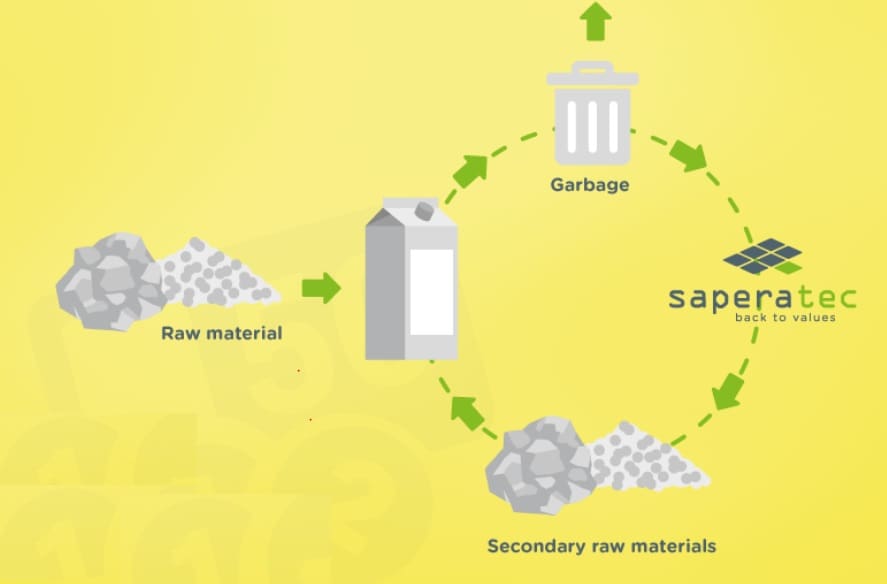
-Citizen scientist project finds 60% of ‘compostable plastic’ doesn’t compost
Single use isn’t it.
Composting shouldn’t need to be complicated. You put all your food waste in a pile, mix it with some leaves and turn it occasionally while bacteria and fungi do their thing to break it back into soil.
But compostable plastics opens a whole can of worms.
A study published last week in Frontiers of Sustainability looked at how “bioplastics” — so-called biodegradable plastic which breaks down in specific conditions — were able to be home composted. When the small army of citizen scientists who helped with the project peeled back the worm blanket, they found that bioplastic seemed both overhyped and unable to deliver. Plastic-films – Cellulosic-ethanol
The researchers found that 60% of home-compostable plastic does not fully disintegrate in home compost bins. Composters who were part of the study were also confused about what sort of bioplastics can be put in a home compost bin, with some trying to compost products made for industrial composting. The team were so underwhelmed with the result, they asked ‘what economic or environmental problem do biodegradable plastics solve?’
The researchers undertook a project called the ‘Big Compost Experiment’ between 2019 and 2021. Almost 10,000 UK residents were part of a survey to gauge thoughts and opinions about compostable packaging. About 900 people completed a home composting experiment, where they placed a piece of home compostable packaging into a mesh bag and placed it into their compost for decomposition.
“Our data also shows that citizens are confused about what the labels on compostable and biodegradable packaging mean. For example, 60% of sampled items tested in home composting experiments were not certified home compostable,” the team write in the new paper.
“Our evidence [shows] citizens don’t understand these complexities of compostable or biodegradable packaging and yet are enthusiastic about buying them (85% reported doing so).”
The results were stark. A whopping 55% of the samples labelled as ‘home compostable’ were found to be still ‘clearly visible’ after the composting time period (between 3 and 21 months), while another 11% still showed small pieces. Only 34% had seemingly composted completely.
Is Australia any better?
“[The 60% result] does not surprise me as it echoes anecdotal evidence I have heard often in Australia,” Jennifer Macklin, a researcher at the Monash Sustainable Development Institute who focuses on recycling, told Cosmos. Plastic-films – Cellulosic-ethanol
“Part of the reason is that home compostable certification assumes certain ‘typical’ (or ideal) conditions attained in a home compost, and it is likely that some or even many home composts are not reaching these conditions due to lack of knowledge or time, local environment, and climate.
“The certification system assumes that the item will spend a certain amount of time in these conditions, time that is usually longer than needed to break down garden and/or food waste, and home composters may be used to much shorter timeframes. This doesn’t mean the certification is ‘false’ just that the ‘criteria’ may not be realistic enough given the diversity of home composting experiences.”
The researchers highlight that this is particularly a problem if the un-composted plastic is being spread onto vegetable gardens or fruit trees. Microplastics are already being found in our water, food and poo, but there’s also questions about what sort of chemicals could be leaching into the soil from the half-composted plastic. The researchers found (in England) that 83% of composters use their compost to grow edible plants, fruits, and vegetables.
Compostable plastic is also not widely used in larger industrial composting – so you also can’t just throw any compostable plastic into a council organics bin.
“Even if an organics processor could theoretically compost the item, they have no way of separating certified products from uncertified products in their waste stream,” says Macklin.
“So, they have to ban all plastic-looking products in order to ensure that they don’t end up with traditional plastic contaminating their organics.”
According to Richard Fine, the founder of compostable packaging company Biopak, this is not the case in some places, like South Australia.
“Some states like SA they are far more advanced and are able to accept certified compostable packaging in the [Food Organics Garden Organics] FOGO kerbside collections,” he told Cosmos via email.
“Claims regarding the degradation of plastics can be highly confusing and understanding the difference can actually be quite simple.
“The seedling logo (industrially compostable) is an international certification and symbol to clearly identify certified compostable materials. We also have a different certification and logo used for products certified home compostable.”
Single use bioplastic
The problem at the heart of all this is the idea that we just need to swap one material for another, and that this new material will be better for the planet. The current trend is “single use” bioplastics or compostable plastics.
If the plastic is made from plants and can be composted in a regular composting pile, the system is theoretically better for the planet.
“The idea that a material can be sustainable is a widespread misconception,” the researchers write in their new paper.
“Only a [whole] system of production, collection, and reprocessing of a material can be sustainable.”
Both Macklin and the researchers highlight circumstances where compostable plastics can be useful. Macklin points to food courts and commercial kitchens, where the entire circular economy of the ecosystem can be managed. The researchers suggest packaging that cannot be recycled because of contamination — like fruit stickers, tea bags, nappies, or wipes. Plastic-films – Cellulosic-ethanol
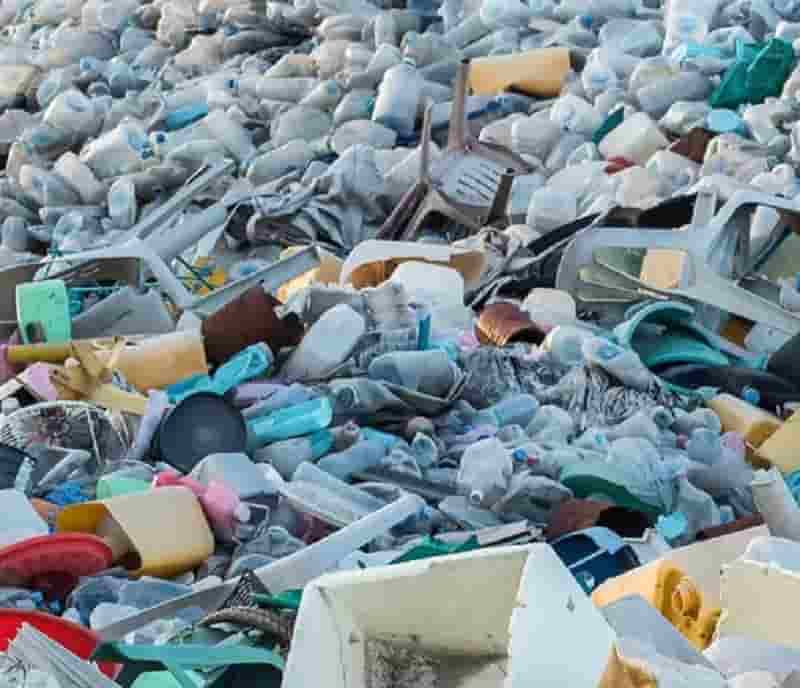
-Boosting recycling of plastic films for a European circular and climate-neutral economy
The EU-funded CIMPA project united experts from across the European recycling value chain to tackle the mounting challenge of managing the more than 2.6 million tonnes of multilayer plastic films that are incinerated or landfilled.
Multilayer plastics consist of several layers of materials, from plastics (PET, PE, and PA) to aluminum and beyond. They are mostly used in packaging to enhance food safety and extend shelf life or in agriculture for crop protection, yet they pose challenges to recyclers.
A multistakeholder workshop hosted by EuRIC, the European Recycling Industries’ Confederation, took place on November 3 to discuss innovative solutions to overcoming this societal challenge.
Preliminary results were presented, including more efficient techniques for sorting multilayer plastics through digital watermarks and NIR, novel decontamination and upgrading processes, and enhanced physical recycling (dissolution).
Topics such as the future of EPR schemes and how to incentivize product design, the impact of mandatory recycled content for plastic products, and achieving better cooperation across the value chain were prominently featured at the workshop.
“European recyclers are committed to addressing the challenges posed by multilayer plastics. Innovation is key and the EU-funded CIMPA project will better enable us to upscale recycling for a truly circular and climate-neutral economy”, stated Emmanuel Katrakis, Secretary General of EURIC. Plastic-films – Cellulosic-ethanol
“CIMPA’s initial results revealed very exciting results on decontamination, sorting, and the upgrading of physical and mechanical recycling. The workshop also enabled us to collect input from external stakeholders”, noted Céline Chevallier, CIMPA coordinator and materials development project manager at IPC (France).
Source: Euric
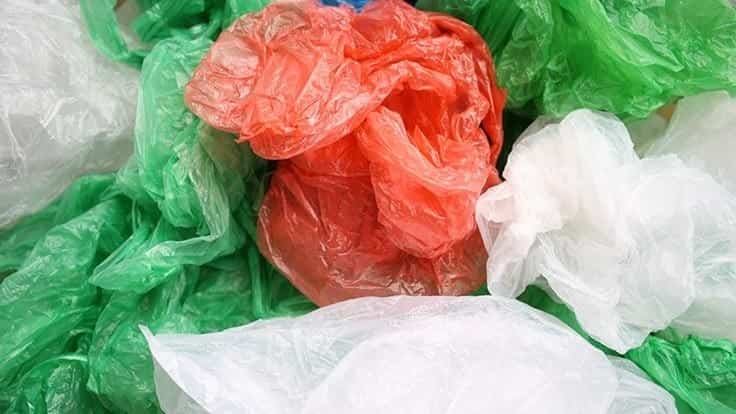
-Shell and Raizen sign large cellulosic ethanol deal
Shell has agreed to buy a total of 3.25 billion litres of sugar-cane cellulosic ethanol under a long-term agreement with Brazil’s Raizen, said the company.
The low-carbon fuel is expected to be produced by five plants that Raizen plans to build in Brazil, bringing its total portfolio of cellulosic ethanol facilities to nine.
Shell contributed the cellulosic ethanol technology during the formation of Raizen, a joint venture with Cosan SA, in 2011. Since then, Raizen has developed and scaled-up the process for making low-carbon intensity ethanol from sugar-cane waste. The new plants will enable Raizen to operate highly integrated bio-energy parks, while the supply deal will help Shell with its strategy of becoming a net-zero emissions energy business by 2050.
By making use of sugar-cane waste, Raizen’s second-generation ethanol (E2G) technology can produce about 50% more ethanol from the same amount of land.
The new plants, the first of which is expected to begin production in 2025, will enable Raizen to provide significantly more low-carbon fuel without creating land-use competition with food crops. Plastic-films – Cellulosic-ethanol
Raizen expects to invest around USD1.5 billion in the plants, the last of which is expected to be operational by the end of 2027, at the latest.
Shell has acquired Singapore-registered waste oil recycling firm EcoOils via wholly-owned subsidiary Shell Eastern Petroleum for an undisclosed fee. This acquisition is part of Shell’s ambition to increase production of sustainable low carbon fuels for transport, including sustainable aviation fuel, it said in a statement. The deal includes all of EcoOils’ Malaysian subsidiaries and 90% of its Indonesian subsidiary, Shell said.

-Braskem Announces a New Renewable Innovation Center in Lexington, Massachusetts
Braskem’s new Boston metro area innovation center will focus on accelerating early-stage innovations in renewable chemicals and sustainable materials
The investment will fuel the discovery of new technologies aligned with Braskem’s commitment to a Carbon-Neutral Circular Economy and help drive future business success
Braskem the largest polyolefins producer in the Americas, as well as a market leader and pioneer producer of biopolymers on an industrial scale, today announced the construction of a new Renewable Innovation Center located in Lexington, Massachusetts at the Lexington Labs at 10 Maguire Road in Lexington, MA owned by Greatland Realty Partners. Braskem’s new 35,000-square-foot innovation center will focus on accelerating innovation in renewable chemicals and sustainable materials. Capabilities at the new center will expand Braskem’s competencies in biotechnology, catalysis, process engineering, and open innovation. Plastic-films – Cellulosic-ethanol
A particular focus will be given to early-stage science and engineering related to the conversion of biomass-based feedstocks, including sugars, cellulose, plant oils, and lignin, to sustainable chemicals and materials. This will enhance Braskem’s resources focused on the discovery of technologies that will drive new growth-oriented offerings centered around Carbon Circularity. This new innovation center is the latest expansion of Braskem’s global Innovation & Technology footprint. Plastic-films – Cellulosic-ethanol
Mark Nikolich, CEO of Braskem America, stated “Our new Renewable Innovation Center reflects Braskem’s ongoing commitment to a Carbon-Neutral Circular Economy and having a positive impact on the environment. Braskem intends to invest around $20 million to build our Renewable Innovation Center and will continue to invest in developing and retaining a world-class, Boston metro area-based innovation team to create proprietary intellectual property in the areas of sustainable chemicals and materials, all of which will be critical to the future success of Braskem’s global business.”
“The Town of Lexington is a leader in adopting Carbon-Neutral sustainable policies and is committed to driving down its greenhouse gas emissions to meet its climate action goals. Braskem’s new Renewable Innovation Center’s commitment to a Carbon-Neutral Circular Economy aligns with Lexington’s goals and commitment to attracting businesses and development that demonstrate sustainable innovation. This facility will be a great addition to Greater Boston’s life sciences ecosystem,” shared Sandhya Iyer, Economic Development Director, Town of Lexington.
Today’s announcement builds upon Braskem’s current Boston-based research team led by Daniel MacEachran, Global Head of Biotechnology, who is leading the new Renewable Innovation Center build-out and professional team expansion. With the initial design and construction phase currently underway, Braskem expects the project to be completed in the second half of 2023, following the successful completion of final validation and commissioning. The new center is strategically based in Boston’s world-class metro area biotechnology and innovation ecosystem, located within a one-hour drive of more than 60 universities and colleges. Work in the new Lexington center will complement Braskem’s global R&D work currently being conducted in Campinas and Triunfo, Brazil as well as in Pittsburgh, Pa. Plastic-films – Cellulosic-ethanol
“Braskem is already a worldwide leader in renewable polymers and chemicals and this major new investment in a U.S. built-for-purpose, renewable innovation center further solidifies our position. With clear and ambitious long-term commitments to people, science, and the planet, the early-stage innovations we are exploring today are what will make a more sustainable tomorrow possible,” said Daniel MacEachran.
From promoting plastic circularity to driving the bio-based materials revolution, Braskem is committed to diminishing the dependency on finite resources and reducing carbon emissions while generating a positive impact for a better society.
Antonio Queiroz, Vice President of Innovation, Technology, and Sustainable Development at Braskem stated, “We believe disruptive innovation is the path to sustainability. We want to expand Braskem’s ability to take it to a new standard in the industry, increasing investments, dedicating resources, and attracting great minds. We know that to achieve real sustainability, we also need to bet on innovation when creating new materials. The launch of Braskem’s new I&T Center will foster the development of new solutions for chemicals and plastics.” Plastic-films – Cellulosic-ethanol
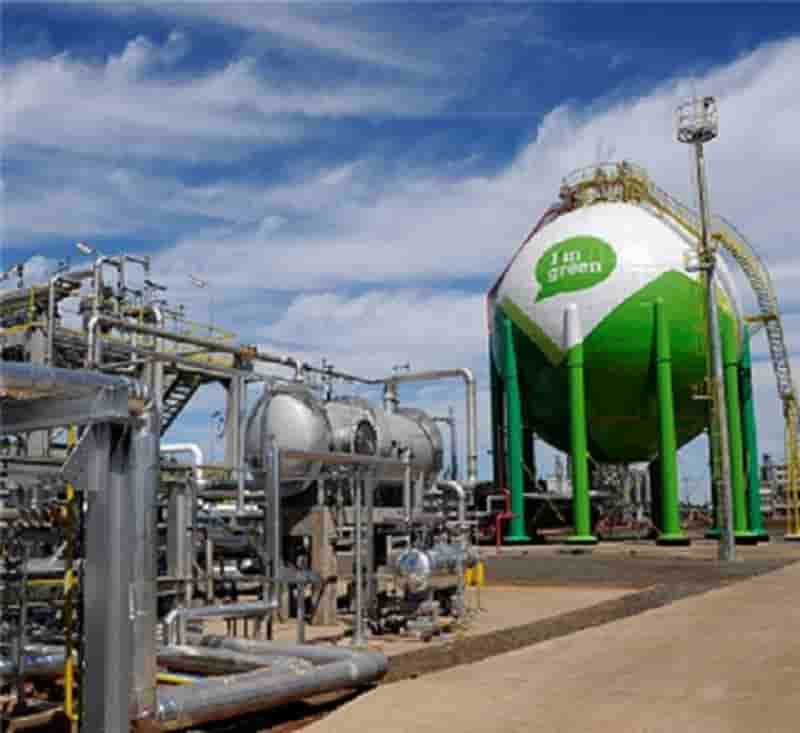
-Husky exhibits at Gulfood manufacturing – showcases complete technologies, solutions and services to enable regional packaging producers
Husky TechnologiesTM, a pioneering technology provider enabling the delivery of essential needs to the global community, is exhibiting at Gulfood Manufacturing 2022 in Dubai, UAE from November 8-11. Husky’s booth (HALL 2, STAND B 2-4) is showcasing the company’s latest technologies, solutions and services engineered to enable regional food and beverage packaging producers to achieve world-class levels of growth, sustainability, flexibility, differentiation, and stability. Plastic-films – Cellulosic-ethanol
“Husky works closely with our customers in the Middle East and Africa to gain a true appreciation for the unique manufacturing challenges they face as a result of changing market conditions and consumer demands,” said Wassim Labban, Husky’s Vice President, Rigid Packaging, EEMEIA, SEA, ANZ. “We’ve seen that these challenges require regional food and beverage packaging producers to take a more holistic approach to manufacturing that is beyond hardware. At Gulfood Manufacturing, we are presenting how our complete solutions enable producers to build more resilient, stable, cost-effective operations while consistently delivering the highest quality, most sustainable packaging.”
At Gulfood Manufacturing, Husky is debuting HyPET CompleteTM. As the industry’s only complete, end-to- end, connected production solution, HyPET CompleteTM was developed to address ongoing challenges of food and beverage packaging producers, ranging from rising energy and material costs, to supply chain fluctuations, to skilled labor shortages, to demands to be more sustainable. Modelled to transform variability into stability throughout every stage of PET preform production, HyPET CompleteTM enables producers to build more stable manufacturing models that are less affected by such dynamic external factors.
HyPET CompleteTM was founded on an end-to-end approach that incorporates factory planning and tooling lifecycle optimization, workforce training and development, a fully digitized delivery model and OEM parts solution, as well as the company’s industry-leading
Advantage+EliteTM proactive, predictive, transparent remote monitoring solution. Designed to enable producers to navigate through today’s most prevalent challenges, HyPET CompleteTM is particularly relevant to producers who are looking for more energy efficient manufacturing processes and packaging materials, such as PET, to offset fluctuating costs.
Dedicated to continuous innovation, HyPET CompleteTM is supported by Husky’s latest generation platform of proven HyPETTM systems, which are tailored for the production of rPET to include a purpose-built drying solution, optimized energy management, enhanced melt control, automated mold cleaning, integrated part quality inspection, and more.

Plastic-films – Cellulosic-ethanol
